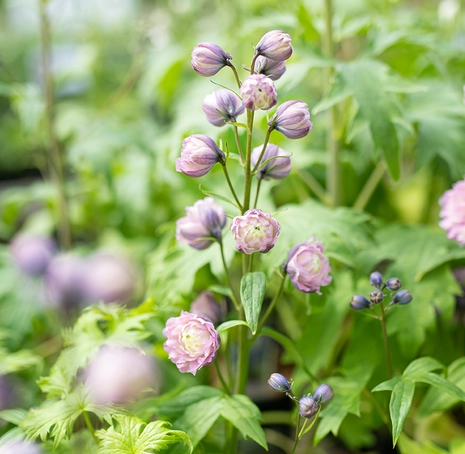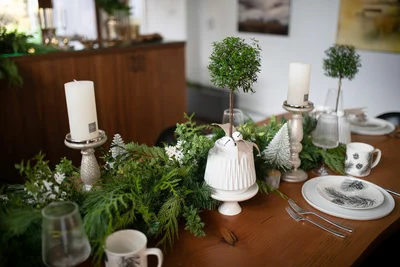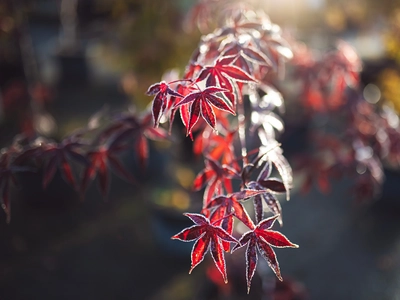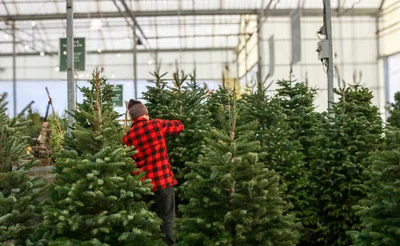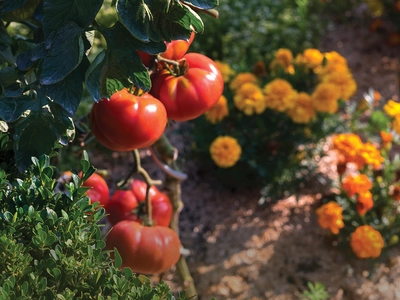
Written by Ingrid Hoff
Some things are just better together, like peanut butter and jelly, or sunflowers and squash. In the garden, just like in life, there are a number of relationships going on, between the plants, the insects, and even the weather. This positive plant relationship is the foundation behind companion planting.
The Original Growing Method
Companion planting is polyculture, or the growing of many different plants together. It’s the opposite of monoculture which is what traditional modern agriculture is patterned around (lots of the same plants growing together). Companion planting has been used both historically and in modern day by many cultures around the world.
Why Try Companion Planting?
Benefits to companion planting include an increase in crop productivity, pest control, improved pollination, and the creation of habitat for helpful insects.
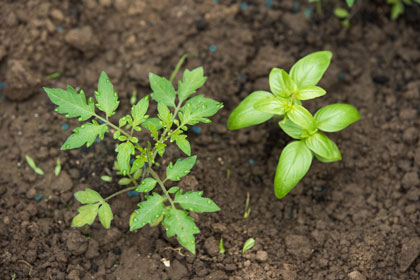 Probably the most famous version of companion planting is something called the three sisters. This was a technique historically used by a number of North American Indigenous groups to grow corn, beans, and squash. The three crops were planted together to benefit each other. The corn would grow tall and provide support for the beans to climb. The beans would increase the soil fertility by fixing nitrogen from the atmosphere. And as the squash vines spread out over the ground, they provide shade to the soil acting like a mulch preventing weeds and retaining moisture.
Probably the most famous version of companion planting is something called the three sisters. This was a technique historically used by a number of North American Indigenous groups to grow corn, beans, and squash. The three crops were planted together to benefit each other. The corn would grow tall and provide support for the beans to climb. The beans would increase the soil fertility by fixing nitrogen from the atmosphere. And as the squash vines spread out over the ground, they provide shade to the soil acting like a mulch preventing weeds and retaining moisture.
A favourite combination for modern gardeners: basil and tomatoes. Not only are they good together on pizza and pasta but growing them together is said to improve the flavour of the tomatoes and the strong aroma of the basil will help to repel insect pests.
Other favourites include:
- Carrots and Onions
- Lettuce and Radishes
- Beans and Corn
- Marigolds and Cucumbers
Garden Smart
Here are a few of the reasons you should take a closer look at playing botanical matchmaker this year in your veggie garden:
-
A backup plan if one crop fails. By planting different plants, you increase the odds that you will have success.
-
Maximizing space, you can often grow more plants in the same area of land if you take advantage of their different growth patterns. Just like growing beans up a corn stalk, or growing short lettuce plants underneath tall broccoli.
-
Protection, by growing tougher plants with ones that might be more tender you are taking advantage of their strength. So, the brunt of climate (sun, frost, wind) will fall on the sturdier plant. A great example is growing lettuce (which is easily burnt in the heat of the sun) in the shade of broccoli.
-
Trap crop, the best offence is a good defense. This is when you purposely plant something you know will be desirable to a pest. Then the pest will flock to the trap plant and you are better able to see and treat them. For example, plant nasturtiums to attract aphids and caterpillars and keep them away from eating your cabbage.
-
If they can’t find it then they can’t eat it. There are two main methods here, to confuse pests visually and based on smell. Bare soil might look “neater” but it actually makes it easier for some insects to find their food, they can see the contrast of the green against the brown earth. The more green you have in the garden the harder it is for pests to find their host plants. By using fragrant plants, marigolds and garlic for example, the smell of the leaves can confuse pests looking for a tasty treat.
-
Positive hosting, this is the idea that by planting plants that have lots of nectar and pollen it will bring in both beneficial insects and pollinators. Plant dill to attract ladybugs, or calendula to attract hover flies. Another example, squash flowers can sometimes be hard for pollinators to find, but sunflowers are like a beacon calling them in.
There are numerous plants that benefit each other, talk to one of the GARDENWORKS experts in store. Note that some relationships are complicated. Check out our blog on what NOT to plant together for more information.
For further reading, see our blog on Succession Planting.


